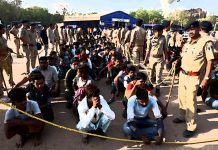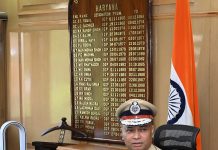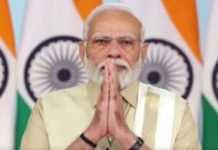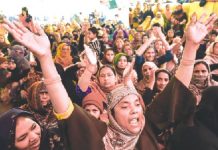Narendra Modi-led NDA government takes charge after 2024 election results gave a fractured mandate, leaving the BJP, which ceded considerable ground in its stronghold states of UP and Maharashtra to the INDIA Bloc, vulnerable to pulls and pressure of its allies, writes Mudit Mathur
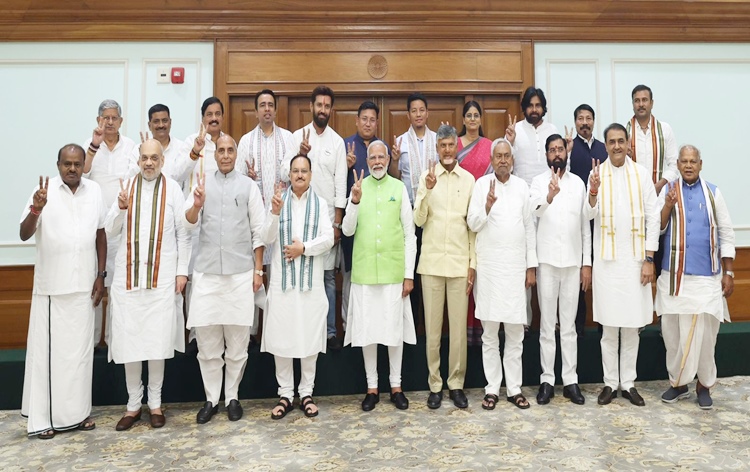
While providing a breather to opposition parties under its expanding umbrella, the Congress party has shown signs of robust revival by winning 100 seats under the proactive leadership of Gandhi scions, Rahul and Priyanka. The fractured 2024 verdict given by Indian voters has altered the nation’s political discourse,checking the ruling party’s slide towards authoritarianism and rejuvenating democracy through coalition governance. The new government will remain under the compelling influence of regional allies, who will undoubtedly continue to press Prime Minister Narendra Modi for financial support to advance their states’ ambitious plans.
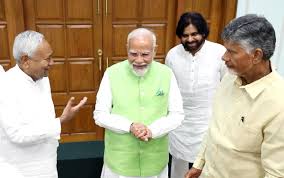
The BJP lost 84 parliamentary seats, suffering a significant blow from Uttar Pradesh where it faced a humiliating defeat. The BJP won 33 out of 80 seats as its 27 sitting members lost elections, shattering its dream of winning more than 400 seats and breaking the 414-seat record achieved by Rajiv Gandhi-led Congress in 1984. The poor performance in Uttar Pradesh and the major setback in Maharashtra marred the BJP’s prospects of winning a majority on its own. Notably, the BJP couldn’t secure a single seat in Tamil Nadu, Punjab, Sikkim, Manipur, Meghalaya, and failed to win the lone seats in Mizoram, Nagaland, Puducherry, Chandigarh, Ladakh and Lakshadweep, as its efforts to polarize voters bore no fruit.
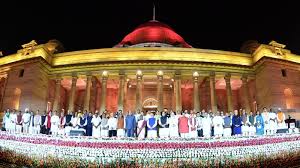
Proving the unduly high seat projections for the BJP by various exit polls wrong, Verdict 2024 resulted in a hung Lok Sabha, bringing back the supremacy of coalition diplomacy. Political analysts considered it the first moral defeat of the Brand Modi in political terms. Compared to the mighty Modi 2.0 regime, this time the BJP’s tally fell drastically from 303 to 240 seats, compelling him to seek support from his coalition partners for a third consecutive term. This personal ambition is driven by a desire to equal the record of Pandit Jawaharlal Nehru, who had achieved a hat-trick of heading the governments at the centre.
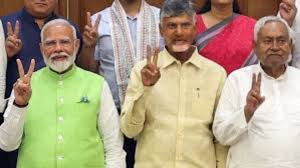
Unlike BJP stalwart Atal Behari Vajpayee, Prime Minister Narendra Modi has led governments with an absolute majority both while at the Centre and in the state of Gujarat. In Gujarat, he governed with unquestioned authority. However, the current political landscape presents a significant challenge for him. Working with coalition allies, who won elections based on divergent political narratives and incompatible ideological propositions poses a considerable hurdle, especially given the saffron outreach of the BJP
This is why many political observers doubted from day one the political stability and ability needed for the continuation of his governance, given his now well-known uncompromising and inflexible temperament. How will he deal with allies who can pull him down and who may not share the same ideological views? It will be interesting to watch how he handles the ideological differences with his counterparts in Andhra Pradesh and Bihar, who hold the key to power.
Currently, Modi faces challenging propositions: handling a strong opposition, satisfying the political needs of NDA allies, and, above all, pacifying the apparent concerns of his parent organization, Rashtriya Swayamsevak Sangh (RSS), regarding issues of ‘misgovernance’ and ‘significant setbacks’ highlighted by its chief, Mohan Bhagwat. Reversing the Agniveer scheme, reinstating earlier arrangements for ad-hoc recruitments in the defence forces, and implementing special financial packages for Bihar and Andhra Pradesh will test the ability of the coalition government to deal with challenges in the days ahead.
Recently, Bhagwat publicly expressed his concerns, stating, “Manipur has been waiting for peace for the last year. There was peace in Manipur ten years ago; it seemed like the gun culture had ended. However, the state has recently experienced violence.” ” The situation in Manipur will have to be considered with priority. There is a need to get over election rhetoric and focus on problems facing the nation,” emphasized the RSS chief. Interestingly, he criticized the practice of attacking each other during election campaigns, the misuse of technology, and the spread of false information. Bhagwat suggested replacing the term “virodhi” with “pratipaksh.”
Bhagwat perhaps was referring to an undignified and divisive level of discourse pursued by a desperate Modi in his aggressive campaigning. When Modi learned of the continuing slide in the party’s fortunes through various poll phases, he upped the ante and targeted his political opponents and the minority community, spreading all sorts of misinformation about Muslim birth rate, snatching of mangalsutras, talks of mujras, and stolen faucets, which hardly helped the party’s cause.
Meanwhile, the selection of the Lok Sabha Speaker remains a contentious issue, with the TDP showing disagreement over the nomination of Daggubati Purandeswari as the BJP nominee for the post. Purandeswari is the estranged sister-in-law of Naidu and the state president of BJP in Andhra Pradesh. The TDP, with its 16 MPs, and the Janata Dal-United, with 12 MPs, have emerged as key players. Chandrababu Naidu has always been a cautious player, seeking a financial package for his state and its capital, Amaravati. Modi, in his past election speeches, had made disparaging remarks about Naidu, which would not be easily forgotten by the latter.
Narendra Modi was sworn in as Prime Minister of India for a third consecutive term on June 9. However, this is the first time he has assumed office as the head of a coalition government. Alongside Modi, a total of 71 ministers were sworn in, including 30 cabinet ministers, 36 ministers of state, and five ministers of state with independent charge. Notably, there is no Muslim minister in his cabinet team.
After assuming office as Prime Minister, Modi allocated the same portfolios to his key cabinet colleagues in the Union Cabinet, largely to strengthen the sentiment of continuity and to demonstrate unity and political stability in the government. The Union Cabinet includes top BJP leaders such as Rajnath Singh, Amit Shah, Nitin Gadkari, S. Jaishankar, Nirmala Sitharaman, Piyush Goyal, Sarbananda Sonowal, Virendra Kumar, Pralhad Joshi, Giriraj Singh, Jyotiraditya Scindia, Ashwini Vaishnaw, Dharmendra Pradhan, Bhupendra Yadav, Gajendra Singh Shekhawat, Annapurna Devi, Kiren Rijiju, Hardeep Singh Puri, Mansukh Mandaviya, G. Kishan Reddy, Rao Inderjeet Singh, and Arjun Ram Meghwal. A new addition to the cabinet is the party president, J.P. Nadda, whose term as BJP president will end this month. Modi also accommodated former chief ministers Shivraj Singh Chouhan and Manohar Lal Khattar in his cabinet.
The induction of former Congress leader Ravneet Singh Bittu from Punjab as a minister of state, despite losing the Lok Sabha election, surprised many. On the other hand, Modi’s decision not to extend a similar gesture to Smriti Irani, who lost the election to Gandhis’ acolyte, KL Sharma, from Amethi, raised eyebrows. Anurag Thakur of Himachal Pradesh being dropped from the cabinet highlights his declining influence following the rise of controversial actress Kangana Ranaut, who successfully contested from Mandi seat to enter the political arena.
Modi has allocated two ministerial berths each to two crucial allies, TDP and JD(U). Kinjarapu Ram Mohan Naidu from TDP has been sworn in as a cabinet minister, with Chandra Sekhar Pemmasani taking oath as minister of state. From JD(U), Rajeev Ranjan Singh has been appointed as a cabinet minister, while Ram Nath Thakur has been made the minister of state. Cabinet positions have also been given to leaders of other allies, including Chirag Paswan (LJP), Jitan Ram Manjhi (HAMS), and H.D. Kumaraswamy (JDS), but none to the NCP.
Former allies like Shiv Sena (UBT) and Akali Dal have already parted ways on a bitter note. New partners like Shinde Sena and Ajit Pawar’s NCP vied for representation in the Union Ministry but have not secured any cabinet positions in the NDA-3 cabinet.
The Nationalist Congress Party (NCP) – the faction under Ajit Pawar – was denied a ministerial berth. Although NCP’s Praful Patel was offered a Minister of State position, he declined it, describing the offer as disrespectful and unacceptable. He cited his prior work in prominent ministries as a cabinet minister in the UPA government to buttress his case. No cabinet positions were allocated to allies in Maharashtra and Uttar Pradesh, where the NDA suffered huge losses.
The BJP fell short of a majority on its own in the 2024 Lok Sabha elections, with its tally of 240 seats. Consequently, it had to rely on its allies in the National Democratic Alliance (NDA) to form the government. The BJP’s losses in India’s two largest states—Uttar Pradesh and Maharashtra—caused a serious setback to Modi’s unfettered dreams. In Uttar Pradesh, the BJP lost 29 seats, while in Maharashtra, it lost 14 seats. This cumulative loss of 43 seats kept the saffron party from reaching the simple majority mark
It may be recalled that the political turmoil in Maharashtra was engineered by the BJP to topple the Udhav Thackrey-led government. The state witnessed how Shiv Sena and Nationalist Congress Party (NCP) split with a bitter fight for claim over name and symbol among their leaders after they were targeted and raided by central investigating agencies––the Enforcement Directorate and the CBI. And how these leaders were compelled to switch over their loyalties towards the BJP to get a clean chit. After toppling the Udhav Thackrey-led government, the BJP cobbled a coalition with breakaway Shiv Sena and NCP factions. In the 2024 Lok Sabha elections, the Mahavikas Aghadi, which included the Congress, Nationalist Congress Party (led by Sharad Pawar), and Shiv Sena (led by Uddhav Balasaheb Thackeray), won 30 out of the 48 seats in the state. In contrast, the BJP, which had won 23 seats out of total 48 in the 2019 elections, secured only eight seats this time
Explaining what went wrong in the state, Maharashtra CM and Shiv Sena chief Eknath Shinde said, “The BJP’s slogan was “400 paar,” with the objective of winning over 400 Lok Sabha seats. However, in certain regions, a negative narrative emerged, suggesting that the Constitution would be changed, and this narrative was linked to the “400 paar” target.” Shinde continued, “People kept this in mind, and it backfired. The BJP’s electoral vehicle couldn’t even cross 300 seats. In several states, they faced a major setback. Even in Maharashtra, the Mahayuti alliance did not achieve the success it had anticipated.”
In the 2019 Lok Sabha elections in Uttar Pradesh, the BJP won 62 seats, and its tally increased to 64 with its ally, the Apna Dal (Soneylal), winning two seats. However, in the 2024 elections, the BJP’s tally has shrunk to 33 despite forming new alliances with parties like the Rashtriya Lok Dal (RLD), the Suheldev Bharatiya Samaj Party (SBSP), and the Nishad Party, aiming to strengthen its OBC base. However, this strategy proved futile as both leaders were discredited in their communities due to their opportunistic approach. OBC-based parties such as NISHAD, Apna Dal (Sonelal), and SBSP failed to transfer their votes to the BJP and even lost their seats, with the RLD being the only gainer.
The RLD has a strong base among Jat voters in districts like Baghpat, Meerut, Mathura, Bijnor, Amroha, Kairana, Muzaffarnagar, Saharanpur, Bulandshahr, Hathras, and Aligarh in western UP. Despite this, the RLD’s support did not translate into wins for the BJP in Muzaffarnagar, Saharanpur and Kairana seats. Meanwhile, the BJP candidates such as Arun Govil (in Meerut), Satish Gautam (Aligarh), and Kanwar Singh Tanwar (Amroha) struggled to secure victory in their respective seats. Overall, other allies also failed to deliver positive results for the party.
Samajwadi Party chief Akhilesh Yadav effectively dismantled the caste chemistry crafted by BJP strategist Amit Shah, expanding his outreach beyond his traditional Yadav-Muslim support base to include Dalits through his Progressive Democratic Alliance (PDA) formula. His strategic ticket distribution to Dalits and the most backward classes paid dividends, resulting in an unexpected victory on 37 seats, surpassing the BJP tally in the Hindu heartland state.
This unforeseen political scenario arose as a consequence of Prime Minister Modi’s unrestrained political rhetoric during his inconsistent election speeches, which seemed to pose a threat to the secular social fabric of the republic. This was followed by the echoing sentiments of many of his close associates across the country, creating concerns among voters that if Modi were to come to power with an overwhelming majority, he would undermine or even replace the Constitution of India, revoking ongoing benefits of reservations for deprived sections of society.
Though Prime Minister Modi later realized the serious adverse effects of these remarks on the party’s prospects, by then it was beyond his control to rectify the situation. The BJP could not secure a single seat in Tamil Nadu, Punjab, Sikkim, Manipur and Meghalaya, and failed to win the lone seats in Mizoram, Nagaland, Puducherry, Chandigarh, Ladakh and Lakshadweep, as its efforts to polarize voters bore no fruit.
The mandate significantly reflects a strong consolidation of oppressed classes (Mandal) against the forces of “Hindutva” (Kamandal), ostensibly to protect the Constitution. This formula halted the surge of the Hindutva tide, putting an end to speculation about India heading towards becoming a “Hindu Nation” through amending or replacing the constitution.
These sentiments ran so deep that even at the birthplace of Lord Rama — Ayodhya — and its surrounding parliamentary constituencies, there was a rejection of the politicization of the consecration ceremony of the Lord Rama temple by Prime Minister Narendra Modi. Modi had tried to use the consecration ceremony to his political advantage by stirring religious sentiments.
Modi also attempted to establish a subtle Hindutva connection, reaching every corner of southern Indian states, symbolized by the route Lord Rama traveled during his exile period to win the war with Ravana in Sri Lanka. However, the results proved to be quite disappointing for him as the BJP bit the dust from Ayodhya to Rameswaram.
In Uttar Pradesh, the Samajwadi Party emerged on top with 37 seats, while the BJP secured 33, the Congress 6, and the Rashtriya Lok Dal (RLD) and Apna Dal (Soneylal) each won 2 seats. The Azad Samaj Party also secured one seat. Consequently, the tally of the INDIA Alliance rose to 44 seats out of 80. Many of the seats won by the BJP were by a very narrow margin. The BJP’s strategy of caste combination this time failed to account for the strength of the realignment of Dalit voters under the Progressive Democratic Alliance (PDA) led by Akhilesh Yadav. Yadav’s decision to distance himself from BSP supremo Mayawati, who was perceived as passive in addressing threats to Baba Saheb’s Constitution and her tactical support for the BJP, contributed to this shift.
The BJP suffered a huge humiliation due to the single-handed approach of Modi-Shah duo, who disregarded advice from grassroots and state leadership in ticket distribution. Despite adverse feedback regarding their winnability, the party repeated many sitting members, excluding the controversial Brij Bhushan Sharan Singh, whose son, Kirti Vardhan Singh replaced him. Brij Bhushan is facing charges of sexual exploitation of women wrestlers in the court. The new Union Council of Ministers saw a drop in the state’s representation from 14 to nine. Kirti Vardhan Singh from Gonda was among those favoured for Modi’s team. Meanwhile, the highly protected minister, Ajay Mishra Teni , lost the election. Teni’s son was involved in an incident of knocking down the agitating farmers with his vehicle, leading to nation-wide protests.
These reversals occurred in Uttar Pradesh, being developed as a hotbed of aggressive “Hindutva” with brewing issues in Kashi and Mathura, similar to Ayodhya, under the regime of saffron-clad Chief Minister Yogi Adityanath. Popularly called “Bulldozer Baba,” his governance model was replicated by the Central government in Delhi and by state governments in Haryana and Madhya Pradesh, where administrations targeted minorities, particularly Muslims.
The administrative highhandedness in demolition drives in Ayodhya hurt a large section of the poor and Dalits depriving them of their housing and livelihood. This approach proved counterproductive, failing to consolidate Hindu communities and muster their votes due to the perceived threats to the rule of law and the constitution.

